Results 12,041 to 12,050 of 12089
Thread: Anandtech News
-
02-28-24, 12:32 AM #12041
Anandtech: Intel Brings vPro to 14th Gen Desktop and Core Ultra Mobile Platforms for
As part of this week's MWC 2024 conference, Intel is announcing that it is adding support for its vPro security technologies to select 14th Generation Core series processors (Raptor Lake-R) and their latest Meteor Lake-based Core Ultra-H and U series mobile processors. As we've seen from more launches than we care to count of Intel's desktop and mobile platforms, they typically roll out their vPro platforms sometime after they've released their full stack of processors, including overclockable K series SKUs and lower-powered T series SKUs, and this year is no exception. Altogether, Intel is announcing vPro Essential and vPro Enterprise support for several 14th Gen Core series SKUs and Intel Core Ultra mobile SKUs.
While Intel's vPro security features aren't anything that we haven't seen before – and on that note, there is nothing new to this generation of vPro technologies – it simply adds existing vPro support, both the total Enterprise securities and the cut-down Essentials vPro hardware-level security to select 14th Gen Core series processors, as well as their latest mobile-focused Meteor Lake processors with Arc graphics launched last year.
Intel 14th Gen vPro: Raptor Lake-R Gets Secured
As we've seen over the last few years with a global shift towards remote work due to the Coronavirus pandemic, the need for up-to-date security in small and larger enterprises is just as critical as it has ever been. Remote and employees in offices alike must have access to the latest software and hardware frameworks to ensure the security of vital data, and that's where Intel vPro comes in.
To quickly recap the current state of affairs, let's take a look at the two levels of Intel vPro securities available, vPro Essentials and vPro Enterprise, and how they differ.
Intel's vPro Essentials was first launched back in 2022 and is a subset of Intel's complete vPro package, which is now commonly known as vPro Enterprise. The Intel vPro Essentials security package is essentially (as per the name) tailored and designed for small businesses, providing a solid foundation in security without penalizing performance. It integrates hardware-enhanced security features, ensuring hardware-level protection against emerging threats from right from its installation. It also utilizes real-time intelligence for workload optimization and Intel's Thread Detection Technology. It adds an additional layer below the operating system that uses AI-based threat detection to mitigate OS-level threats and attacks.
Pivoting to Intel vPro Enterprise security features, this is designed for SMEs to meet the high demands of large-scale business environments. It offers advanced security features and remote management capabilities, which are crucial for businesses operating with sensitive data and requiring high levels of cybersecurity. Additionally, the platform provides enhanced performance and reliability, making it suitable for intensive workloads and multitasking in a professional setting. Integrating these features from the vPro Enterprise platform ensures that large enterprises can maintain high productivity levels while ensuring data security and efficient IT management with the latest generations of processors, such as the Intel Core 14th Gen family.
Much like we saw when Intel announced their vPro for the 13th Gen Core series, it's worth noting that both the 14th and 13th Gen Core series are based on the same Raptor Lake architecture and, as such, are identical in every aspect bar base and turbo core frequencies.
While Intel isn't technically launching any new chip SKUs (either desktop or mobile) with vPro support, the vPro desktop platform features are enabled through the use of specific motherboard chipsets, with both Q670 and W680 chipsets offering sole support for vPro on 14th Gen. Unless users are using either a Q670 or W680 motherboard with the specific chips listed above. vPro Essentials or Enterprise will not be enabled or work with each processor unless installed into a motherboard from one of these chipsets.Intel 14th Gen Core with vPro for Desktop
(Raptor Lake-R)AnandTech Cores
P+E/TP-Core
Base/Turbo
(MHz)E-Core
Base/Turbo
(MHz)L3 Cache
(MB)Base
WTurbo
WvPRO
Support
(Ent/Ess)Price
($)i9-14900K 8+16/32 3200 / 6000 2400 / 4400 36 125 253 Enterprise $589 i9-14900 8+16/32 2000 / 5600 1500 / 4300 36 65 219 Both $549 i9-14900T 8+16/32 1100 / 5500 800 / 4000 36 35 106 Both $549 i7-14700K 8+12/28 3400 / 5600 2500 / 4300 33 125 253 Enterprise $409 i7-14700 8+12/28 2100 / 5400 1500 / 4200 33 65 219 Both $384 i7-14700T 8+12/28 1300 / 5000 900 / 3700 33 35 106 Both $384 i5-14600K 6+8/20 3500 / 5300 2600 / 4000 24 125 181 Enterprise $319 i5-14600 6+8/20 2700 / 5200 2000 / 3900 24 65 154 Both $255 i5-14500 6+8/20 2600 / 5000 1900 / 3700 24 65 154 Both $232 i5-14600T 6+8/20 1800 / 5100 1200 / 3600 24 35 92 Both $255 i5-14500T 6+8/20 1700 / 4800 1200 / 3400 24 35 92 Both $232
As with the previous 13th Gen Core series family (Raptor Lake), the 14th Gen, which is a direct refresh of these, follows a similar pattern. Specific SKUs from the 14th Gen family include support only for the full-fledged vPro Enterprise, including the Core i5-14600K, the Core i7-14700K, and the flagship Core i9-14900K. Intel's vPro Enterprise security features are supported on both Q670 and W680 motherboards, giving users more choice in which board they opt for.
The rest of the above Intel 14th Gen Core series stack, including the non-monikered chips, e.g., the Core i5-14600, as well as the T series, which are optimized for efficient workloads with a lower TDP than the rest of the stack, all support both vPro Enterprise and vPro Essentials. This includes two processors from the Core i9 family, including the Core i9-14900 and Core i9-14900T, two from the i7 series, the Core i7-14700 and Core i7-14700T, and four from the i5 series, the Core i5-14600, Core i5-14500, the Core i5-14600T and the COre i5-14500T.
For the processors mentioned above (non-K), different levels of vPro support are offered depending on the motherboard chipset. If a user wishes to use a Q670 motherboard, then users can specifically opt to use Intel's cut-down vPro Essentials security features. Intel states that users with a Q670 or W680 can use the full vPro Enterprise security features, including the Core i9-14900K, the Core i7-14700K, and the Core i5-14600K. Outside of this, none of the 14th Gen SKUs with the KF (unlocked with no iGPU) and F (no iGPU) monikers are listed with support for vPro.
Intel Meteor Lake with vPro: Core Ultra H and U Series get Varied vPro Support
Further to the Intel 14th Gen Core series for desktops, Intel has also enabled vPro support for their latest Meteor Lake-based Core Ultra H and U series mobile processors. Unlike the desktop platform for vPro, things are a little different in the mobile space, as Intel offers vPro on their mobile SKUs, either with vPro Enterprise or vPro Essentials, not both.
The above table highlights not just the specifications of each Core Ultra 9, 7, and 5 SKU but also denotes which model gets what level of vPro support. Starting with the Core Ultra 9 185H processor, the current mobile flagship chip on Meteor Lake, this chip supports vPro Enterprise. Along with the other top-tier SKU from each of the Core Ultra 9, 7, and 5 families, including the Core Ultra 7 165H and the Core Ultra 135H, other chips with vPro Enterprise support include the Core Ultra 7 165U and Core Ultra 7 164U, as well as the Core Ultra 5 135U and Core Ultra 5 134U.Intel Core Ultra H and U-Series Processors with vPro
(Meteor Lake)AnandTech Cores
(P+E+LP/T)P-Core Turbo
FreqE-Core Turbo
FreqGPU GPU Freq L3 Cache
(MB)vPro Support
(Ent/Ess)Base TDP Turbo TDP Ultra 9 Core Ultra 9 185H 6+8+2/22 5100 3800 Arc Xe (8)2350 24 Enterprise 45 W 115 W Ultra 7 Core Ultra 7 165H 6+8+2/22 5000 3800 Arc Xe (8)2300 24 Enterprise 28 W 64/115 W Core Ultra 7 155H 6+8+2/22 4800 3800 Arc Xe (8) 2250 24 Essentials 28 W 64/115 W Core Ultra 7 165U 2+8+2/14 4900 3800 Arc Xe (4) 2000 12 Enterprise 15 W 57 W Core Ultra 7 164U 2+8+2/14 4800 3800 Arc Xe (4) 1800 12 Enterprise 9 W 30 W Core Ultra 7 155U 2+8+2/14 4800 3800 Arc Xe (4) 1950 12 Essentials 15 W 57 W Ultra 5 Core Ultra 5 135H 4+8+2/18 4600 3600 Arc Xe
(7)2200 18 Enterprise 28 W 64/115 W Core Ultra 5 125H 4+8+2/18 4500 3600 Arc Xe (7) 2200 18 Essentials 28 W 64/115 W Core Ultra 5 135U 2+8+2/14 4400 3600 Arc Xe (4)1900 12 Enterprise 15 W 57 W Core Ultra 5 134U 2+8+2/14 4400 3800 Arc Xe (4)1750 12 Enterprise 9 W 30 W Core Ultra 5 125U 2+8+2/14 4300 3600 Arc Xe (4)1850 12 Essentials 15 W 57 W
Intel's other Meteor Lake chips, including the Core Ultra 7 155H, the Core Ultra 7 155U, the Core Ultra 5 125H, and the Core Ultra 5 125U, only support Intel's vPro Essentials security features. This presents a slight 'dropping of the ball' from Intel on this, which we highlighted in our Intel 13th Gen Core gets vPro piece last year.
Intel vPro Support Announcement With No New Hardware, Why Announce Later?
It is worth noting that Intel's announcement of adding vPro support to their first launch of Meteor Lake Core Ultra SKUs isn't entirely new; Intel did highlight that Meteor Lake would support vPro last year within their Series 1 Product Brief dated 12/20/2023. Intel's formal announcement of vPro support for Meteor Lake is more about which SKU has which level of support, and we feel this could pose problems to users who have already purchased Core Ultra series notebooks for business and enterprise use. Multiple outlets, including Newegg and directly from HP, are alluding to mentioning vPro whatsoever.
This could mean that a user has purchased a notebook with, say, a Core Ultra 5 125H (vPro Essentials), which would be used within an SME or by said SME as a bulk purchase but wouldn't be aware that the chip doesn't have vPro Enterprise, from which they personally and from a business standpoint could benefit from the additional securities. We reached out to Intel, and they sent us the following statement.
"Since we are launching vPro powered by Intel Core Ultra & Intel Core 14th Gen this week, prospective buyers will begin seeing the relevant system information on OEM and enterprise retail partner (eg. CDW) websites in the weeks ahead. This will include information on whether a system is equipped with vPro Enterprise or Essentials so that they can purchase the right system for their compute needs."
Gallery: Intel vPro Security Slide Deck





More...
-
02-29-24, 12:40 PM #12042
Anandtech: Tenstorrent Licenses RISC-V CPU IP to Build 2nm AI Accelerator for Edge
Tenstorrent this week announced that it had signed a deal to license out its RISC-V CPU and AI processor IP to Japan's Leading-edge Semiconductor Technology Center (LSTC), which will use the technology to build its edge-focused AI accelerator. The most curious part of the announcement is that this accelerator will rely on a multi-chiplet design and the chiplets will be made by Japan's Rapidus on its 2nm fabrication process, and then will be packaged by the same company.
Under the terms of the agreement, Tenstorrent will license its datacenter-grade Ascalon general-purpose processor IP to LSTC and will help to implement the chiplet using Rapidus's 2nm fabrication process. Tenstorrent's Ascalon is a high-performance out-of-order RISC-V CPU design that features an eight-wide decoding. The Ascalon core packs six ALUs, two FPUs, and two 256-bit vector units and when combined with a 2nm-class process technology promises to offer quite formidable performance.
The Ascalon was developed by a team led by legendary CPU designer Jim Keller, the current chief executive of Tenstorrent, who used to work on successful projects by AMD, Apple, Intel, and Tesla.
In addition to general-purpose CPU IP licensing, Tenstorrent will co-design 'the chip that will redefine AI performance in Japan.' This apparently means that LSTC does not plan to license LSTC its proprietary RISC-V Tensix cores tailored for neural network inference and training, but will help to design a proprietary AI accelerator generally for inference workloads.
"The joint effort by Tenstorrent and LSTC to create a chiplet-based edge AI accelerator represents a groundbreaking venture into the first cross-organizational chiplet development in semiconductor industry," said Wei-Han Lien, Chief Architect of Tenstorrent's RISC-V products. "The edge AI accelerator will incorporate LSTC's AI chiplet along with Tenstorrent's RISC-V and peripheral chiplet technology. This pioneering strategy harnesses the collective capabilities of both organizations to use the adaptable and efficient nature of chiplet technology to meet the increasing needs of AI applications at the edge."
Rapidus aims to start production of chips on its 2nm fabrication process that is currently under development sometimes in 2027, at least a year behind TSMC and a couple of years behind Intel. Yet, if it starts high-volume 2nm manufacturing in 2027, it will be a major breakthrough from Japan, which is trying hard to return to the global semiconductor leaders.
Building an edge AI accelerator based on Tenstorrent's IP and Rapidus's 2nm-class production node is a big deal for LSTC, Tenstorrent, and Rapidus as it is a testament for technologies developed by these three companies.
"I am very pleased that this collaboration started as an actual project from the MOC conclusion with Tenstorrent last November," said Atsuyoshi Koike, president and CEO of Rapidus Corporation. "We will cooperate not only in the front-end process but also in the chiplet (back-end process), and work on as a leading example of our business model that realizes everything from design to back-end process in a shorter period of time ever."
More...
-
03-01-24, 11:20 AM #12043
Anandtech: The Cooler Master MWE V2 Gold 750W PSU Review: Effective, But Limited By A
Cooler Master, renowned for its pioneering role in cooling technologies, has evolved into a key player in the PC components industry, extending its expertise to include cases and power supply units (PSUs). The company's current catalog is a testament to its commitment to diversity, featuring over 75 PC cases, 90 coolers, and 120 PSUs, all designed to cater to the evolving demands of tech enthusiasts and professionals alike.
This review focuses on the Cooler Master MWE Gold V2 750W PSU, a key offering in Cooler Master's power supply lineup that embodies the brand's vision of combining quality and value. The MWE Gold V2 series is engineered to offer solid performance and reliability at a price point that appeals to system builders and gamers looking for an entry-level to mid-range solution. As a result, the MWE Gold V2 750W has been a consistently popular offering within Cooler Master's catalog, often cycling in and out of stock depending on what sales are going on. This makes the PSU a bit harder to track down in North America than it does Europe, and quick to vanish when it does show up.
More...
-
03-02-24, 07:23 AM #12044
Anandtech: SK Hynix Mulls 'Differentiated' HBM Memory Amid AI Frenzy
SK Hynix and AMD were at the forefront of the memory industry with the first generation of high bandwidth memory (HBM) back in 2013 – 2015, and SK Hynix is still leading this market in terms of share. In a bid to maintain and grow its position, SK Hynix has to adapt to the requirements of its customers, particularly in the AI space, and to do so it's mulling over how to make 'differentiated' HBM products for large customers.
"Developing customer-specific AI memory requires a new approach as the flexibility and scalability of the technology becomes critical," said Hoyoung Son, the head of Advanced Package Development at SK Hynix in the status of a vice president
When it comes to performance, HBM memory with a 1024-bit interface has been evolving fairly fast: it started with a data transfer rate of 1 GT/s in 2014 – 2015 and reached upwards of 9.2 GT/s – 10 GT/s with the recently introduced HBM3E memory devices. With HBM4, the memory is set to transit to a 2048-bit interface, which will ensure steady bandwidth improvement over HBM3E.
But there are customers which may benefit from differentiated (or semi-custom) HBM-based solutions, according to the vice president.
"For implementing diverse AI, the characteristics of AI memory also need to become more varied," Hoyoung Son said in an interview with BusinessKorea. "Our goal is to have a variety of advanced packaging technologies capable of responding to these changes. We plan to provide differentiated solutions that can meet any customer needs."
With a 2048-bit interface, many (if not the vast majority) of HBM4 solutions will likely be custom or at least semi-custom based on what we know from official and unofficial information about the upcoming standard. Some customers might want to keep using interposers (but this time they are going to get very expensive) and others will prefer to install HBM4 modules directly on logic dies using direct bonding techniques, which are also expensive.
Making differentiated HBM offerings requires sophisticated packaging techniques, including (but certainly not limited to) SK Hynix's Advanced Mass Reflow Molded Underfill (MR-RUF) technology. Given the company's vast experience with HBM, it may well come up with something else, especially for differentiated offerings.
"For different types of AI to be realized, the characteristics of AI memory also need to be more diverse," the VP said. "Our goal is to have a range of advanced packaging technologies to respond to the shifting technological landscape. Looking ahead, we plan to provide differentiated solutions to meet all customer needs."
Sources: BusinessKorea, SK Hynix
More...
-
03-04-24, 12:20 PM #12045
Anandtech: Silicon Power PX10 Portable SSD Review: One Step Forward, Two Steps Back
Silicon Power announced the MS70 and PX10 Portable SSDs in late 2023. The company is well known for offering entry- and mid-range products at compelling price points, but the two products came with plenty of promises in the 1GBps-class category. The MS70 promised high storage density (up to 2TB in a compact thumb drive), while the PX10 targeted power users and professionals with performance consistency as the focus. Read on for a detailed look at the Silicon Power PX10 including an analysis of its internals, value proposition, and evaluation of its performance consistency, power consumption, and thermal profile.
More...
-
03-05-24, 08:19 AM #12046
Anandtech: Apple Launches M3-Based MacBook Air 13 and 15: 3nm CPU for the Masses
Apple on Monday introduced its new generation MacBook Air laptops based on the company's most-recent M3 system-on-chip (SoC). The new MacBook Air notebooks come in the same sizes as the previous models – 13.6 inches and 15.3 inches – with prices starting from $1,099 and $1,299 respectively.
The key improvement in Apple's 2024 MacBook Air laptops is of course the M3 processor. Fabbed on TSMC's N3B process, Apple's latest mainstream SoC was first launched late last year as part of the 2023 MacBook Pro lineup, and is now being brought down to the MacBook Air family. The vanilla M3 features four high-performance cores operating at up to 4.05 GHz, four energy-efficient cores, a 10 core GPU based on the latest graphics architecture (with dynamic caching, hardware-accelerated ray tracing, and hardware-accelerated mesh shading), and a new media engine with hardware-accelerated AV1 decoding.
Like prior vanilla M-series SoC, the M3 offers two display engines, allowing it to drive up to two displays. Normally this has been one internal and one external display, but new to the M3/2024 MBAs, the laptop can also drive two external 5K displays when the internal display is disabled (e.g. the lid's closed).MacBook Air Specifications Model MBA 15
2024MBA 13
2024MBA 15
2023MBA 13
2022MBA 13
2020CPU Apple M3
4C/4T High-Perf + 4C/4T High-EffApple M2
4C/4T High-Perf + 4C/4T High-EffApple M1
4C/4T High-Perf +
4C/4T High-EffGPU Apple M3 Integrated
(8 or 10 Cores)Apple M2 Integrated
(8 or 10 Cores)Apple M1 Integrated
(7 or 8 Cores)Memory 8 - 24 GB LPDDR5-6400 8 - 24 GB LPDDR5-6400 8 - 16 GB LPDDR4X-4266 SSD 256 GB - 2 TB 256 GB - 2 TB 256 GB - 2 TB I/O 2x USB4 Type-C
w/Thunderbolt 3
1x MagSafe 3
3.5mm Audio
Touch ID2x USB4 Type-C
w/Thunderbolt 3
1x MagSafe 3
3.5mm Audio
Touch ID2x USB4 Type-C
w/Thunderbolt 3
3.5mm Audio
Touch IDDisplay 15.3-inch 2880x1864 IPS LCD
P3 with True Tone13.6-inch 2560x1664 IPS LCD
P3 with True Tone15.3-inch 2880x1864 IPS LCD
P3 with True Tone13.6-inch 2560x1664 IPS LCD
P3 with True Tone13.3-inch 2560x1600 IPS LCD
P3 with True ToneDimensions Width 34.0 cm 30.4 cm 34.0 cm 30.4 cm 30.4 cm Depth 23.7 cm 21.5 cm 23.7 cm 21.5 cm 21.2 cm Height 1.1 cm 1.1 cm 1.1 cm 1.1 cm 0.41 - 1.61 cm Weight 3.3 lbs (1.5 kg) 2.7 lbs (1.22 kg) 3.3 lbs (1.5 kg) 2.7 lbs (1.22 kg) 2.8 lbs (1.29 kg) Battery Capacity 66.5 Wh 52.6 Wh 66.5 Wh 52.6 Wh 49.9 Wh Battery Life 15 - 18 Hours 15 - 18 Hours 15 - 18 Hours Price $1299 $1099 $1299 $1199 $999
With regards to performance, Apple is opting to compare the new AIrs to the 2020 models with Apple's M1 SoC. The CPU is said to be up to 35% – 60% faster compared to the original M1 chip depending on the workload, but such comparisons should be taken with a grain of salt as companies tend to overhype their biggest advantages. One thing to keep in mind is that since MacBook Airs come without active cooling, their performance is typically lower than MacBook Pros running the same processor.
The SoC supports up to 24 GB of LPDDR5-6400 memory (featuring bandwidth of 100 GB/s), though entry-level MacBook Air models still feature only a diminutive 8 GB of RAM and a 256 GB SSD. More advanced (and usable) configurations offer 16 GB or 24 GB of memory and up to 2 TB of solid-state storage.
Other improvements of Apple's 2024 MacBook Air laptops based on the M3 processor compared to predecessors include Wi-Fi 6E support; improved three-microphones array with enhanced voice clarity, voice isolation, and wide spectrum modes.
As for input/output capabilities, the new MacBook Air notebooks feature two Thunderbolt 4/USB-C ports, a MagSafe port for charging, a 3.5-mm jack for headsets, and a 1080p FaceTime HD camera.
The 2024 Apple MacBook Air come in midnight, starlight, silver, and space gray colors. The machines are equipped with a 52.6 Wh battery that provides up to 18 hours of video playback. The 13.6-inch machine is 0.44 inch (1.13 cm) thick and weighs 2.7 pounds (1.24 kilograms), whereas the 15.3-inch laptop is 0.45 inch (1.15 cm) thick and weighs 3.3 pounds (1.51 kilograms).
With the launch of its M3-based MacBook Airs, Apple will discontinue its M2-based MacBook Air 15, but will retain the M2-based MacBook Air 13 as their entry-level option, with prices now starting at $999.
More...
-
03-06-24, 06:52 PM #12047
Anandtech: Western Digital Issues Update on Company Split: CEOs for Post-Split Entiti
Now well in the midst of executing its plan to divide itself into separate hard drive and NAND businesses, Western Digital today offered a fresh update on the state of that split, and what the next steps are for the company. With the eventual goal of dividing the company into two independent, publicly traded companies, Western Digital is reporting that they have made significant progress in key transactional projects, and they are also announcing their initial leadership appointments for the post-separation businesses.
Western Digital's separation, announced on October 30, 2023, aims to create two focused companies with distinct product lineups for hard drives and NAND flash memory, respectively, as well as NAND flash memory-based products. This move is expected to speed up innovation and introduce new growth opportunities, according to Western Digital. Meanwhile, with separate capital structures, operational efficiency of the two entities will be higher compared to the united company, the management of Western Digital claims.
Western Digital led the storage industry's consolidation by acquiring HGST, various SSD and flash companies in the early 2010s, and SanDisk in 2016 for NAND flash production. As a result, in late 2010s the company become a media-agnostic, vertically-integrated storage technology company. However, the company faced challenges in growing its revenue. The 3D NAND and SSD markets are highly competitive commodity markets, and as a result they tend to fluctate depending on supply and demand. Meanwhile, demand for HDDs is declining and offseting decreasing unit sales with 3D NAND-based products and nearline hard drives was challenging. Meanwhile, to avoid avoid competition with larger storage solutions providers like Dell, HPE, and IBM — which purchase Western Digital's HDDs, SSDs, and NAND memory — Western Digital had to divest its storage solutions, which presents additional challenges.
As a result, Western Digital's HDD and NAND businesses have acted largely independently since late 2020, when it became apparent that the combined company has failed to become bigger than the sum of Western Digital and SanDisk parts. So far, quite some progress has been made in preparing for the separation, including establishing legal entities in 18 countries, preparing independent financial models, and finalizing preparations for regulatory filings. As a result, the company remains on track to finish the split in the second-half of this year, according to Western Digital.
With regards to post-split leadership, David Goeckeler has been appointed as the chief executive designate for the NAND flash memory spinoff company. He expressed enthusiasm for the NAND business's potential in market growth and the development of new memory technologies.
"Today's announcement highlights the important steps we are making towards the completion of an extremely complex transaction that incorporates over a dozen countries and spans data storage technology brands for consumers to professional content creators to the world’s leading device OEMs and the largest cloud providers," said David Goeckeler, CEO of Western Digital. "I am pleased with the exceptional work the separation teams have done so far in creating a spin-ready foundation that will ensure a successful transition to independent, market-leading companies for our Flash and HDD businesses."
Meanwhile, Irving Tan, currently executive vice president of global operations, will assume the CEO role for the standalone HDD company, which will continue to operate under the Western Digital brand. It is unclear where Ashley Gorakhpurwalla, currently the head of WDC's HDD business unit, will end up, or if he'll even remain with the company at all.
"While both Western Digital's businesses will have the strategic focus and resources to pursue exciting opportunities in their respective markets once the separation is complete, the Flash business offers exciting possibilities with market growth potential and the emerging development of disruptive, new memory technologies," added Goeckeler. "I am definitely looking forward to what's next for the spinoff team."
More...
-
03-06-24, 06:52 PM #12048
Anandtech: JEDEC Publishes GDDR7 Memory Spec: Next-Gen Graphics Memory Adds Faster PA
JEDEC on Tuesday published the official specifications for GDDR7 DRAM, the latest iteration of the long-standing memory standard for graphics cards and other GPU-powered devices. The newest generation of GDDR brings a combination of memory capacity and memory bandwidth gains, with the later being driven primarily by the switch to PAM3 signaling on the memory bus. The latest graphics RAM standard also boosts the number of channels per DRAM chip, adds new interface training patterns, and brings in on-die ECC to maintain the effective reliability of the memory.
“JESD239 GDDR7 marks a substantial advancement in high-speed memory design,” said Mian Quddus, JEDEC Board of Directors Chairman. “With the shift to PAM3 signaling, the memory industry has a new path to extend the performance of GDDR devices and drive the ongoing evolution of graphics and various high-performance applications.”
GDDR7 has been in development for a few years now, with JEDEC members making the first disclosures around the memory technology about a year ago, when Cadence revealed the use of PAM3 encoding as part of their validation tools. Since then we've heard from multiple memory manufacturers that we should expect the final version of the memory to launch in 2024, with JEDEC's announcement essentially coming right on schedule.
As previously revealed, the biggest technical change with GDDR7 comes with the switch from two-bit non-return-to-zero (NRZ) encoding on the memory bus to three-bit pulse amplitude modulating (PAM3) encoding. This change allows GDDR7 to transmit 3 bits over two cycles, 50% more data than GDDR6 operating at an identical clockspeed. As a result, GDDR7 can support higher overall data transfer rates, the critical component to making each generation of GDDR successively faster than its predecessor.
The first generation of GDDR7 is expected to run at data rates around 32 Gbps per pin, and memory manufacturers have previously talked about rates up to 36 Gbps/pin as being easily attainable. However the GDDR7 standard itself leaves room for even higher data rates – up to 48 Gbps/pin – with JEDEC going so far as touting GDDR7 memory chips "reaching up to 192 GB/s [32b @ 48Gbps] per device" in their press release. Notably, this is a significantly higher increase in bandwidth than what PAM3 signaling brings on its own, which means there are multiple levels of enhancements within GDDR7's design.GDDR Generations GDDR7 GDDR6X
(Non-JEDEC)GDDR6 B/W Per Pin 32 Gbps (Gen 1)
48 Gbps (Spec Max)24 Gbps (Shipping) 24 Gbps (Sampling) Chip Density 2 GB (16 Gb) 2 GB (16 Gb) 2 GB (16 Gb) Total B/W (256-bit bus) 1024 GB/sec 768 GB/sec 768 GB/sec DRAM Voltage 1.2 V 1.35 V 1.35 V Data Rate QDR QDR QDR Signaling PAM-3 PAM-4 NRZ (Binary) Maximum Density 64 Gb 32 Gb 32 Gb Packaging 266 FBGA 180 FBGA 180 FBGA
Digging deeper into the specification, JEDEC has also once again subdivided a single 32-bit GDDR memory chip into a larger number of channels. Whereas GDDR6 offered two 16-bit channels, GDDR7 expands this to four 8-bit channels. The distinction is somewhat arbitrary from an end-user's point of view – it's still a 32-bit chip operating at 32Gbps/pin regardless – but it has a great deal of impact on how the chip works internally. Especially as JEDEC has kept the 256-bit per channel prefetch of GDDR5 and GDDR6, making GDDR7 a 32n prefetch design.
The net impact of all of this is that, by halving the channel width but keeping the prefetch size the same, JEDEC has effectively doubled the amount of data that is prefetched per cycle of the DRAM cells. This is a pretty standard trick to extend the bandwidth of DRAM memory, and is essentially the same thing JEDEC did with GDDR6 in 2018. But it serves as a reminder that DRAM cells are still very slow (on the order of hundreds of MHz) and aren't getting any faster. So the only way to feed faster memory buses is by fetching ever-larger amounts of data in a single go.
The change in the number of channels per memory chip also has a minor impact on how multi-channel "clamshell" mode works for higher capacity memory configurations. Whereas GDDR6 accessed a single memory channel from each chip in a clamshell configuration, GDDR7 will access two channels – what JEDEC is calling two-channel mode. Specifically, this mode reads channels A and C from each chip. It is effectively identical to how clamshell mode behaved with GDDR6, and it means that while clamshell configurations remain supported in this latest generation of memory, there aren't any other tricks being employed to improve memory capacity beyond ever-increasing memory chip densities.
On that note, the GDDR7 standard officially adds support for 64Gbit DRAM devices, twice the 32Gbit max capacity of GDDR6/GDDR6X. Non-power-of-two capacities continue to be supported as well, allowing for 24Gbit and 48Gbit chips. Support for larger memory chips further pushes the maximum memory capacity of a theoretical high-end video card with a 384-bit memory bus to as high as 192GB of memory – a development that would no doubt be welcomed by datacenter operators in the era of large language AI models. With that said, however, we're still regularly seeing 16Gbit memory chips used on today's memory cards, even though GDDR6 supports 32Gbit chips. Coupled with the fact that Samsung and Micron have already disclosed that their first generation of GDDR7 chips will also top out at 16Gbit/24Gbit respectively, it's safe to say that 64Gbit chips are pretty far off in the future right now (so don't sell off your 48GB cards quite yet).
For their latest generation of memory technology, JEDEC is also including several new-to-GDDR memory reliability features. Most notably, on-die ECC capabilities, similar to what we saw with the introduction of DDR5. And while we haven't been able to get an official comment from JEDEC on why they've opted to include ECC support now, its inclusion is not surprising given the reliability requirements for DDR5. In short, as memory chip densities have increased, it has become increasingly hard to yield a "perfect" die with no flaws; so adding on-chip ECC allows memory manufacturers to keep their chips operating reliably in the face of unavoidable errors.
Internally, the GDDR7 spec requires a minimum of 16 bits of parity data per 256 bits of user data (6.25%), with JEDEC giving an example implementation of a 9-bit single error correcting code (SEC) plus a 7-bit cyclic redundancy check (CRC). Overall, GDDR7 on-die ECC should be able to correct 100% of 1-bit errors, and detect 100% of 2-bit errors – falling to 99.3% in the rare case of 3-bit errors. Information about memory errors is also made available to the memory controller, via what JEDEC terms their on-die ECC transparency protocol. And while technically separate from ECC itself, GDDR7 also throws in another memory reliability feature with command address parity with command blocking (CAPARBLK), which is intended to improve the integrity of the command address bus.
Otherwise, while the inclusion of on-die ECC isn't likely to have any more of an impact on consumer video cards than its inclusion had for DDR5 memory and consumer platforms there, it remains to be seen what this will mean for workstation and server video cards. The vendors there have used soft ECC on top of unprotected memory for several generations now; presumably this will remain the case for GDDR7 cards as well, but the regular use of soft ECC makes things a lot more flexible than in the CPU space.
Finally, GDDR7 is also introducing a suite of other reliability-related features, primarily related to helping PAM3 operation. This includes core independent LFSR (linear-feedback shift register) training patterns with eye masking and error counters. LFSR training patterns are used to test and adjust the interface (to ensure efficiency), eye masking evaluates signal quality, and error counters track the number of errors during training.
Technical matters aside, this week's announcement includes statements of support from all of the usual players on both sides of the isle, including AMD and NVIDA, and the Micron/Samsung/SKhynix trifecta. It goes without saying that all parties are keen to getting to use or sell GDDR7 respectively, given the memory capacity and bandwidth improvements it will bring – and especially in this era where anything aimed at the AI market is selling like hotcakes.
No specific products are being announced at this time, but with Samsung and Micron having previously announced their intentions to ship GDDR7 memory this year, we should see new memory (and new GPUs to pair it with) later this year.
JEDEC standards and publications are copyrighted by the JEDEC Solid State Technology Association. All rights reserved.
More...
-
03-07-24, 01:16 PM #12049
Anandtech: Intel to Hold Webinar to Discuss Long-Term Vision for Foundry, Separating
As Intel spins off its fabs into the Intel Foundry business, it will change the way it reports results in the coming months. To discuss the company's long-term vision and give investors a better understanding of how Intel's business will move forward with Intel Foundry and other divisions, Intel plans to host a webinar on segment reporting on April 2, 2024.
"The webinar will discuss the longer-term vision for the foundry business and the importance of establishing a foundry-like relationship between Intel Foundry, Intel's manufacturing organization, and Intel Products, its product business units, to drive greater transparency and accountability," the description of the event reads.
The company plans to submit an 8-K form, revising its past financial reports to align with a new reporting framework, before the upcoming investor webinar. Starting with Q1 FY2024, Intel will disclose its financial outcomes using this new reporting structure.
One of the things that Intel will touch upon at the webinar is the financial and market performance of the Intel Foundry division. These things may not impress. It is likely that initially, Intel Foundry's business will have high costs, and the majority of orders will come from Intel itself (i.e., a significant but still relatively low market share). Meanwhile, Intel Foundry has to invest in advanced fab tools to prep its fabs for 20A and 18A, which drives its costs up, and this likely means losses.
Yet, it will take some time before Intel Foundry obtains revenue streams from major customers, such as Microsoft or the U.S. military. IF's financial numbers and market share may still not impress immediately, but this is normal at this stage. This is perhaps what Intel will communicate and discuss at its upcoming webinar.
In fact, although Intel fully expects its 18A (1.8nm-class) fabrication process to be ahead of its rivals in terms of power, performance, and area (PPA), the company's chief financial officer said at a conference this week that it does not expect to land large, high-priority orders from third parties with this technology.
"We probably will not win anybody's major volume [with] 18A," said David Zisner, CFO of Intel, at the Morgan Stanley Technology, Media, and Telecom Conference (via SeekingAlpha). "We will win some smaller SKUs, and that is all we need, to be honest with you. That will be very significant to us, even though it seems maybe marginal in the marketplace, particularly if we can collect enough of these customers [developing high-performance compute chips]."
Intel's 18A fabrication process builds upon the company's 20A manufacturing technology (a 2nm-class node) that introduces RibbonFET gate-all-around transistors and PowerVia backside power delivery network. In GAA transistors, horizontal channels are fully encased by gates. These channels are built using epitaxial growth and selective removal, enabling adjustments in width for enhanced performance or lower power use. As for the backside power delivery network (BS PDN), the technique moves power lines to the wafer's back, separating them from I/O wiring, which allows for making power vias thicker and reducing their resistance, which helps to both increase transistor performance and lower power consumption.
Both GAA transistors and BS PDN promise to offer significant performance and power efficiency enhancements, which is good for AI, HPC, and smartphone SoCs. Meanwhile, 18A promises a 10% performance per watt improvement over 20A and GAA innovations. Thus, it promises to be quite competitive compared to TSMC's N3B and N3P.
"When it comes to the high-performance compute part of the market, that is really where we are starting to see a lot of our uptake," said Zisner. "The particular aspects of 18A with PowerVia and RibbonFET, combined with our just legacy of experience on high-performance compute, I think, makes us a really compelling partner for customers that are in that space and want to develop products."
While Intel's 18A was designed to be a foundry node, its process design kit (PDK) is available, and the production technology is compatible with third-party electronic design automation (EDA) and simulation tools. However, Intel itself does not expect this process to be used for high-volume products of third parties. Even Microsoft will produce only one chip on Intel's 18A.
Intel Foundry is a newcomer to the contract chipmaking market. Third-party customers of IF need to gain confidence in its process technologies, performance, yields, and ability to produce in volumes. Once this happens, Intel Foundry will gain market share and reach profitability.
Sources: Intel, SeekingAlpha
More...
-
03-07-24, 01:16 PM #12050
Anandtech: SanDisk Professional PRO-BLADE Portable SSD Ecosystem Review
Western Digital had unveiled the SanDisk Professional PRO-BLADE modular SSD ecosystem in mid-2022 to serve the needs of the professional market. Compact and sturdy NVMe drives (PRO-BLADE SSD Mag) swappable across discrete bus-powered enclosures (PRO-BLADE TRANSPORT), and also compatible with a multi-bay reader (PRO-BLADE STATION) have perfectly fit the requirements of multi-user / multi-site workflows in the content capture industry. Read on for a detailed look at the first-generation PRO-BLADE SSD Mags and the PRO-BLADE TRANSPORT enclosure. In addition to the evaluation of the performance consistency, power consumption, and thermal profile, an analysis of the internals is also included.
More...
Thread Information
Users Browsing this Thread
There are currently 7 users browsing this thread. (0 members and 7 guests)




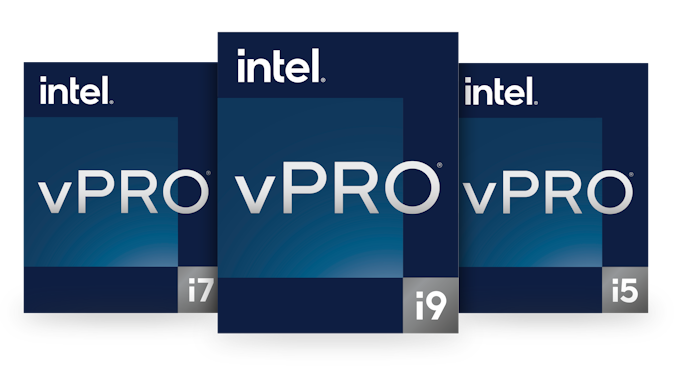
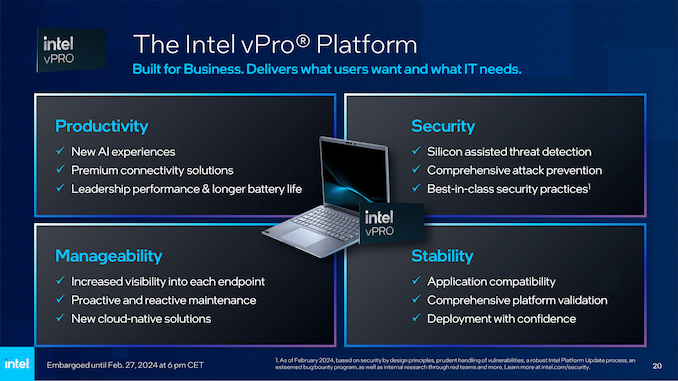
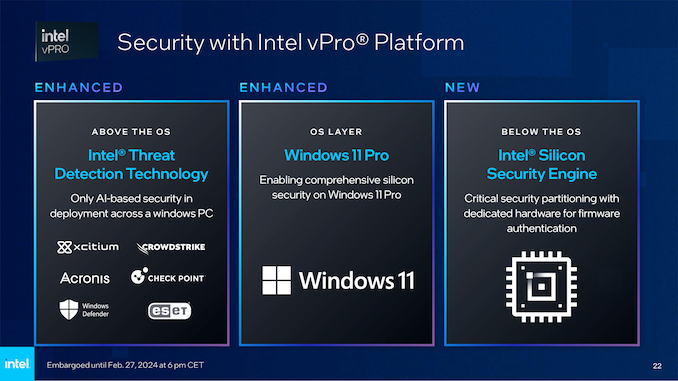
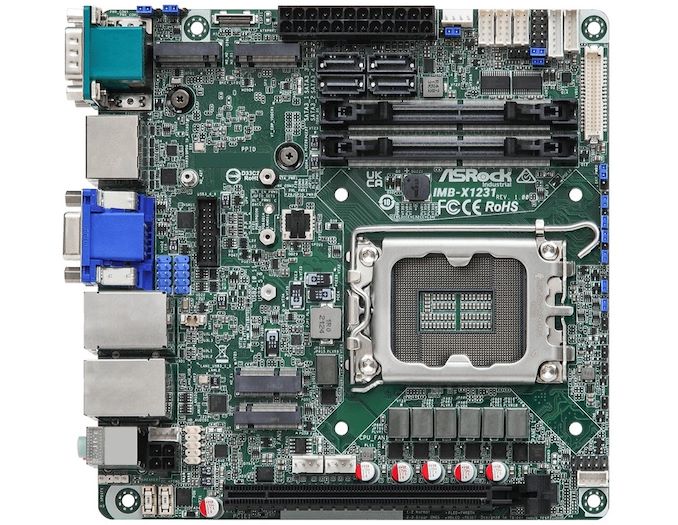

 Quote
Quote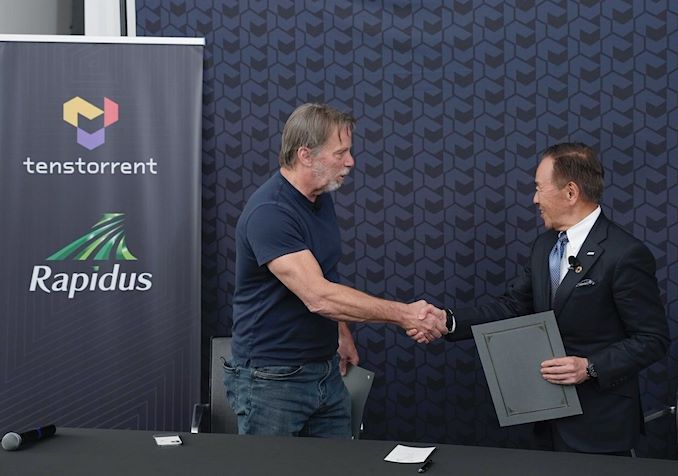
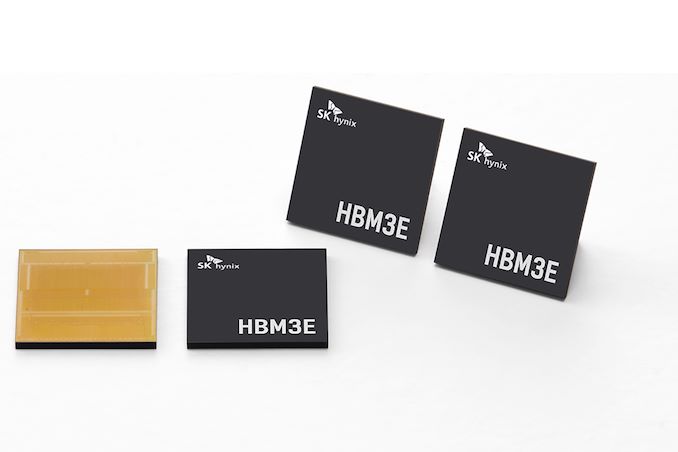
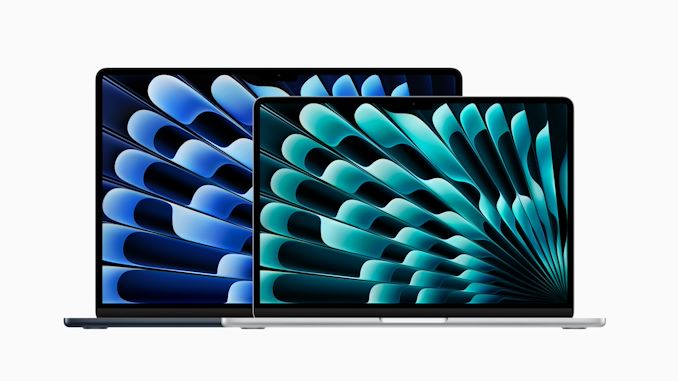
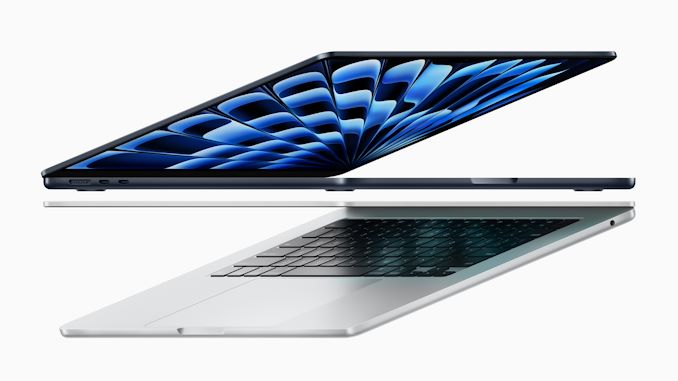



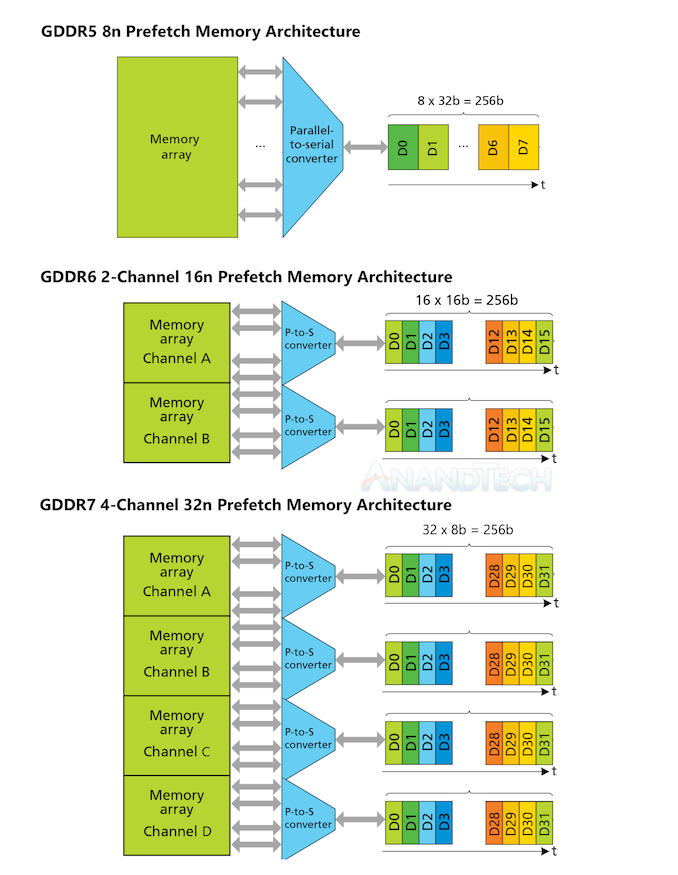
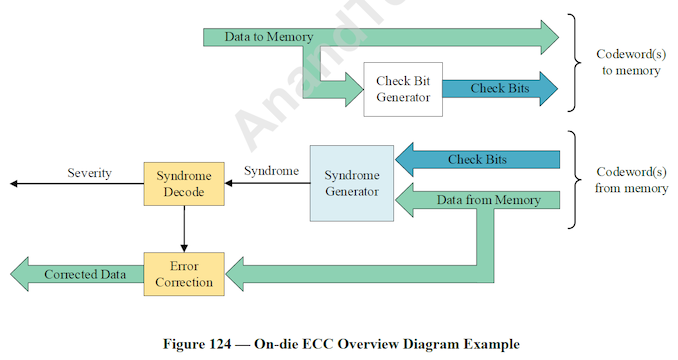
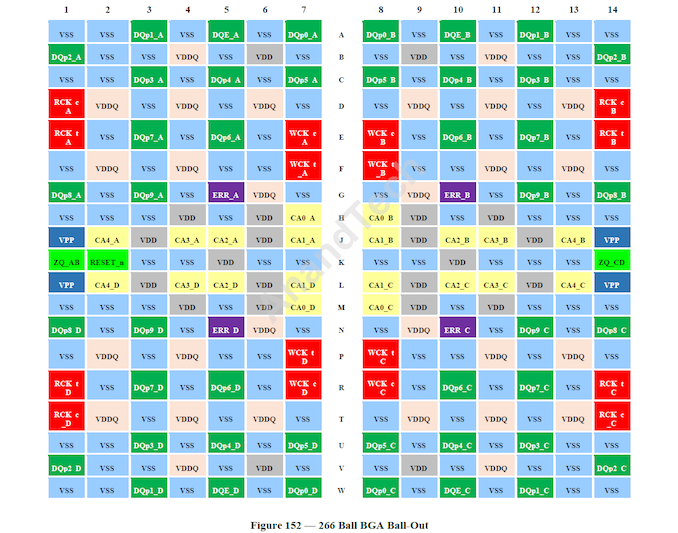

















Bookmarks